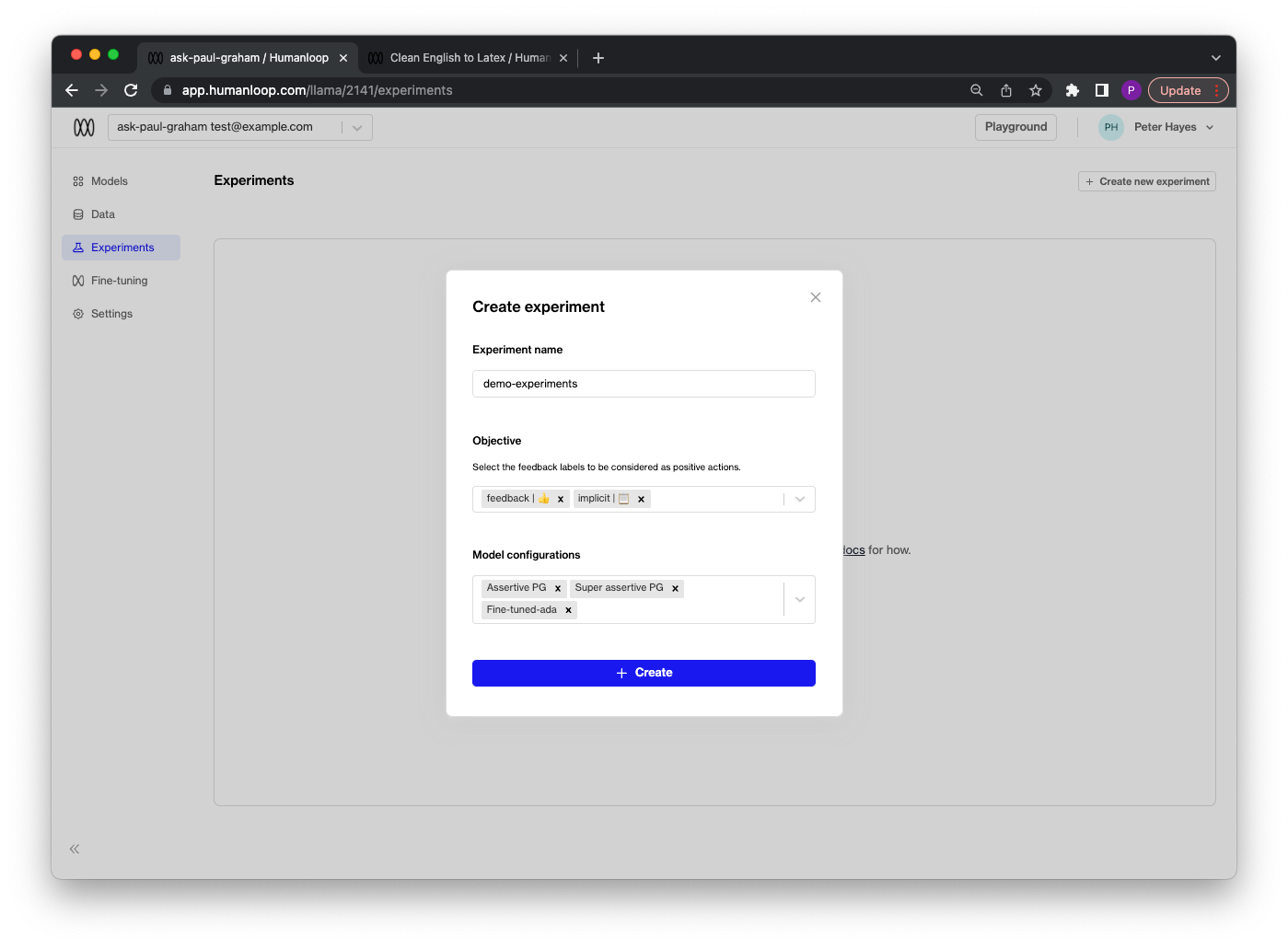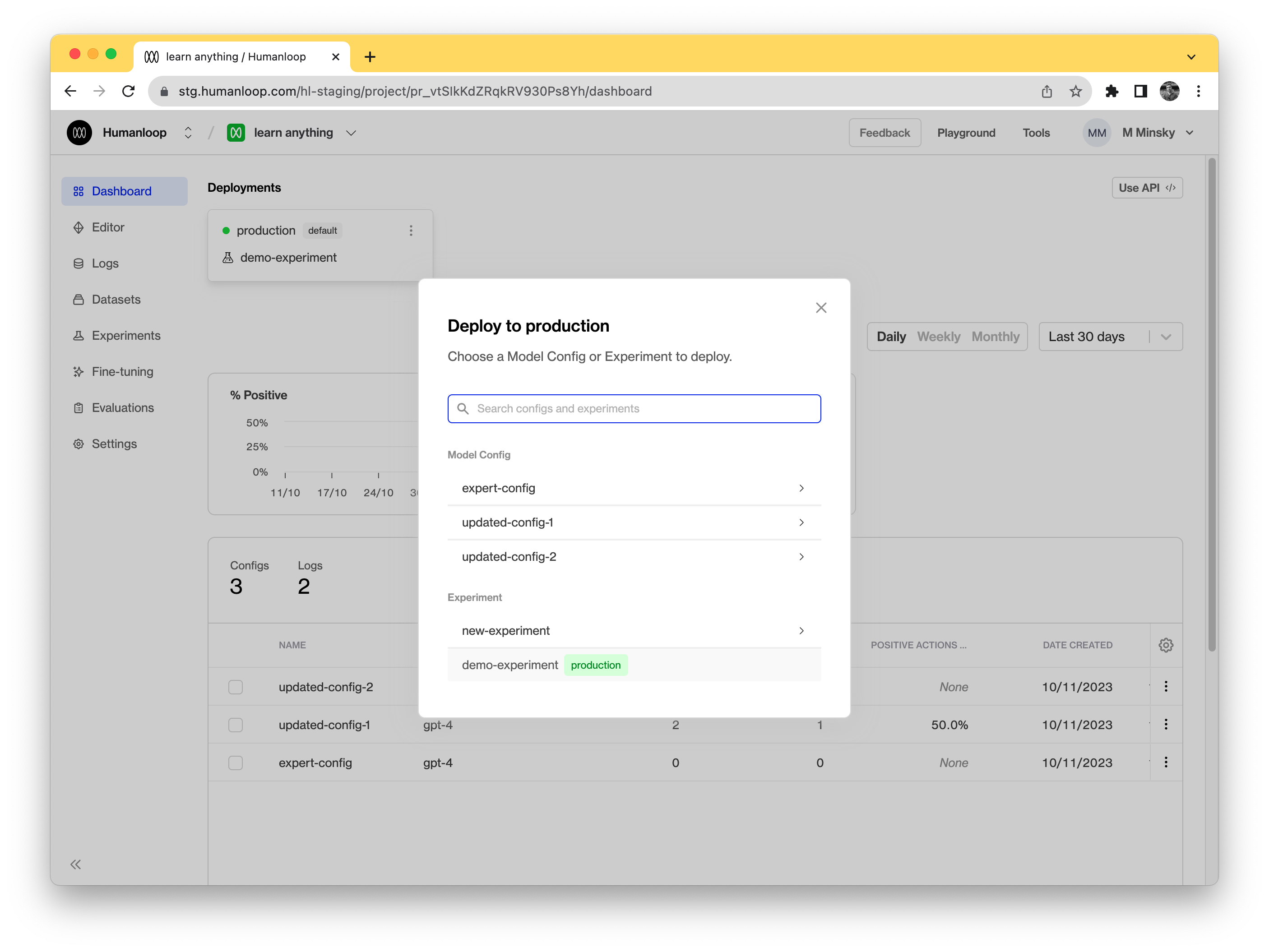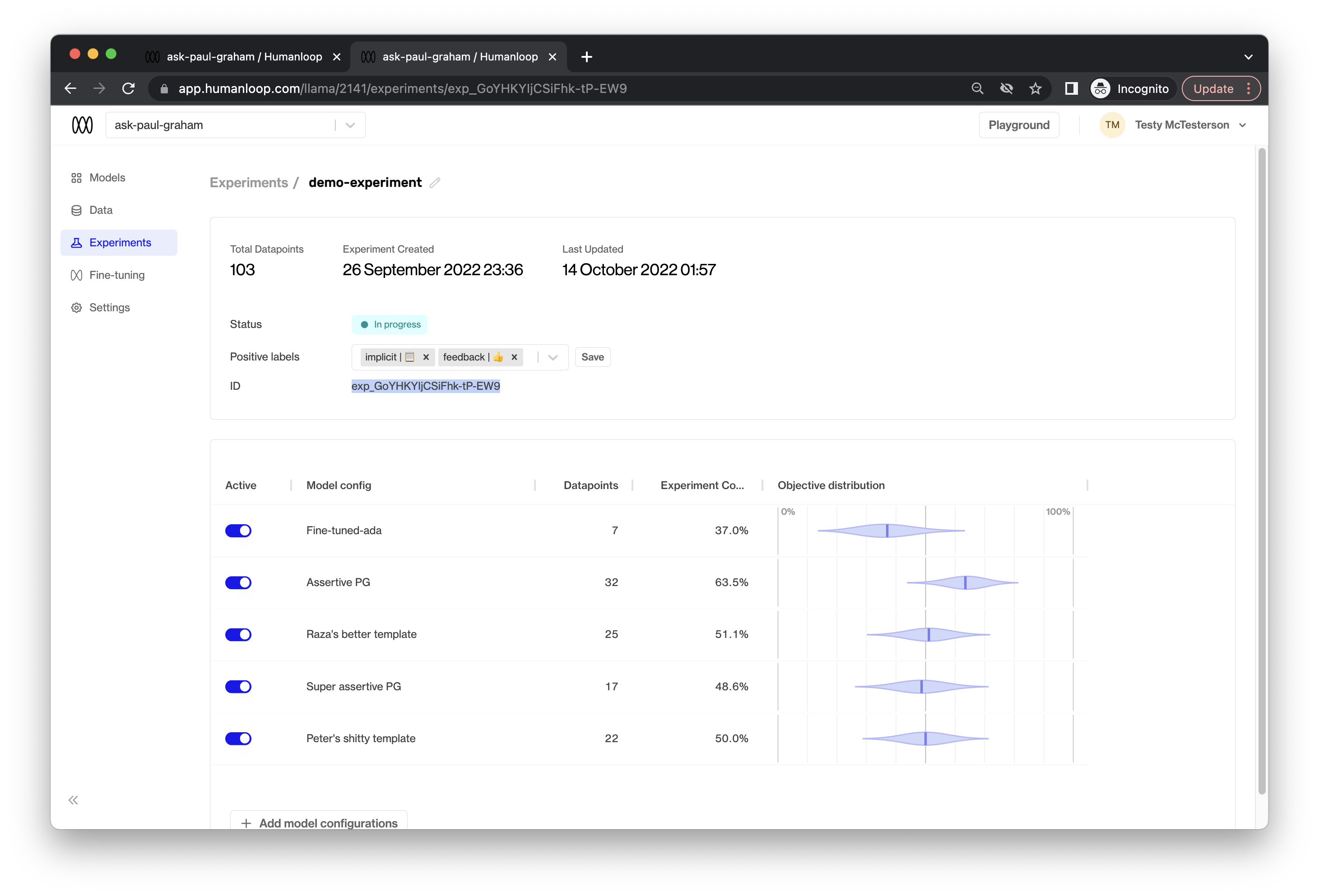Run experiments managing your own model
How to set up an experiment on Humanloop with your own models.
Experiments can be used to compare different prompt templates, different parameter combinations (such as temperature and presence penalties) and even different base models.
This guide focuses on the case where you wish to manage your own model provider calls.
Prerequisites
- You already have a project created - if not, please pause and first follow our project creation guides.
- You have integrated
humanloop.complete_deployed()or thehumanloop.chat_deployed()endpoints andhumanloop.feedback()with the API or Python SDK.
Using other model providers
This guide assumes you are managing your own model provider calls. If are using an OpenAI model we recommend to instead follow our run an experiment guide, which results in a simpler integration.
Support for other model providers on Humanloop is coming soon.
Create an experiment
- Navigate to the Experiments tab of your project.
- Click the Create new experiment button:
- Give your experiment a descriptive name.
- Select a list of feedback labels to be considered as positive actions - this will be used to calculate the performance of each of your model configs during the experiment.
- Select which of your project’s model configs you wish to compare.
Then click the Create button.

Log to your experiment
In order to log data for your experiment without using humanloop.complete_deployed() or humanloop.chat_deployed(), you must first determine which model config to use for your LLM provider calls. This is where the humanloop.experiments.get_model_config() function comes in.
- Go to your project dashboard and set the experiment as the active deployment. To do so, find the default environment in the Deployments bar. Click the dropdown menu from the default environment and from those options select Change deployment. In the dialog that opens select the experiment you created.

- Copy your
project_idfrom the URL,https://app.humanloop.com/projects/<project_id>/dashboard. The project ID starts withpr_. - Alter your existing logging code to now first sample a model_config from your experiment to use when making your call to OpenAI:
from humanloop import Humanloop
import openai
# Initialize the SDK with your Humanloop API key
humanloop = Humanloop(api_key="<YOUR Humanloop API KEY>")
# Sample a model_config from your experiment.
model_config_response = humanloop.projects.get_active_config(id=project_id)
model_config = model_config_response.body["config"]
# Make a generation using OpenAI using the parameters from the sampled model_config.
response = openai.Completion.create(
prompt="Answer the following question like Paul Graham from YCombinator:\n"
"How should I think about competition for my startup?",
model=model_config["model"],
temperature=model_config["temperature"],
)
# Parse the output from the OpenAI response.
output = response.choices[0].text
# Log the inputs and outputs to the experiment trial associated to the sampled model_config.
log_response = humanloop.log(
project_id=project_id,
inputs={"question": "How should I think about competition for my startup?"},
output=output,
trial_id=model_config["trial_id"],
)
# Use this ID to associate feedback received later to this log.
data_id = log_response.body["id"]
You can also run multiple experiments within a single project. In this case, first navigate to the Experiments tab of your project and select your Experiment card. Then, retrieve your experiment_id from the experiment summary:
 Then, retrieve your model config from your experiment by calling
Then, retrieve your model config from your experiment by calling humanloop.experiments.sample(experiment_id=experiment_id).
Updated 6 months ago
